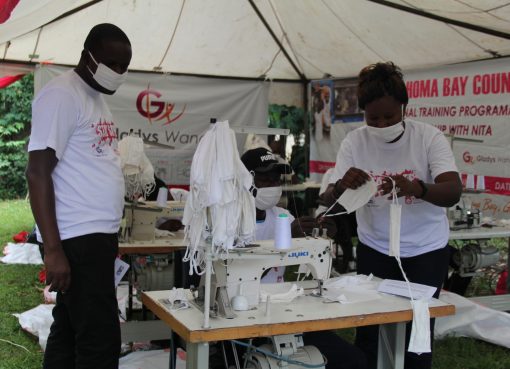A Zetech university student who has invented a security technology solution that restricts unauthorised entry into premises has received a boost after several security firms and companies showed interest in absorbing the innovation into their enterprises.
Francis Ng’ang’a, an Electrical and Electronic Engineering student, says he is working with the firms on how best to advance the innovation and make it work as other similar technologies by reputable tech firms in the sector.
Speaking during the institution’s career week, Ng’ang’a said the investors and industry players have bought into the technology and are ready to partner to advance and absorb it.
“I’m on a serious network with potential partners and industry players in the security industry, schools, as well as other firms who want to buy into the innovation. They have shown willingness and are advising on how best we can advance the systems as well as mass production of the innovation to make it work similarly with others in the sector,” said Ng’ang’a.
This offers Ng’ang’a a big boost given that many young innovators have been left frustrated as their work has never left the shelves due to lack of support to advance and buy them.
Ng’ang’a’s Advanced Face Recognition system scans people’s faces and eye iris to ascertain their identity before giving access to gain entry into premises.
The technology, he says, has high-precision algorithms to accurately identify individuals, reducing errors of scanning strangers associated with manual checks.
Its processing capability is able to handle large volumes of people accessing entry, thus enhancing convenience with improved security through biometric data, safeguarding against identity theft and unauthorised access.
“This more secure and efficient technology seeks to replace the manual identification method. It ascertains people’s identity through their face and eye iris; this is quite effective compared to students’s identification cards,” says Ng’ang’a during a recent innovation week at the institution.
The security, he says, has a backup where, when it fails, other identification keys, including fingerprints, can be used.
“The system can be used in a school setup where students scan their faces as they enter the schools. What the system aims to do is scrap off the use of student identification cards,” Francis said.
He said the technology can be developed further due to the advancement of technology, including the use of artificial intelligence (AI).
“There are instances where the students may forget their ID and are turned away. The face recognition system helps to bridge this gap. The system can also be deployed in classes to mark class attendance,” he added.
Ng’ang’a hopes that more industry players will continue to partner with institutions of higher learning and young innovators to support their work, saying most of the innovations are top-end and, if advanced, can change a lot in society.
“Platforms like the Career Week offer linkages and networks. We call for more of such platforms to help market our ideas,” he says.
He at the same time called on universities to support young innovators by setting up a kitty to fund the ideas as well as offer expertise and linkages to the industry.
By Muoki Charles





